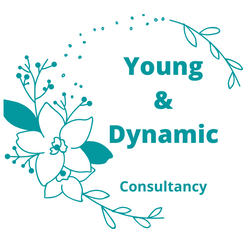After arriving in Suriname, Paramaribo is probably the first place you will get acquainted with. The capital of Suriname, about 60 – 90 minutes drive from the airport. This unique old town has a lot to offer in terms of history, culture and interesting places to visit. In this article I will take you along a number of highlights of Paramaribo, which you must have seen if you have visited the city. And best of all, everything is within walking distance of each other.
History
The Historic Center
The center of Paramaribo is one that is full of old colonial buildings that clearly show the history of European (Dutch) colonization. The old wooden buildings, often built on high beams, show clear characteristics of old European architectural styles. In the past, all buildings in the city were built of wood and especially the rich people lived in houses on nits. This is because the city was regularly flooded during a heavy rain shower, which often occurred in the large or small rainy season. Therefore, the prosperous people always made sure to keep their feet dry. Despite the fact that not all buildings in the center are equally well maintained, a lot of work is being done on renovation, maintenance and the appearance of the city center to make it more attractive for tourists again. The historic center of Paramaribo has therefore been declared a UNESCO World Heritage Site and is certainly worth a visit.
Fort Zeelandia
With an accompanying museum, Fort Zeelandia is a former Dutch fort that served as a barracks and prison. In colonial times a very important and strategic place for the defense of the city of Paramaribo. In the museum you can go for a free tour every Sunday to learn more about the history of this special fort. Afterwards you can enjoy a delicious meal in the restaurant Baka Foto, with a relaxed view over the Suriname river.
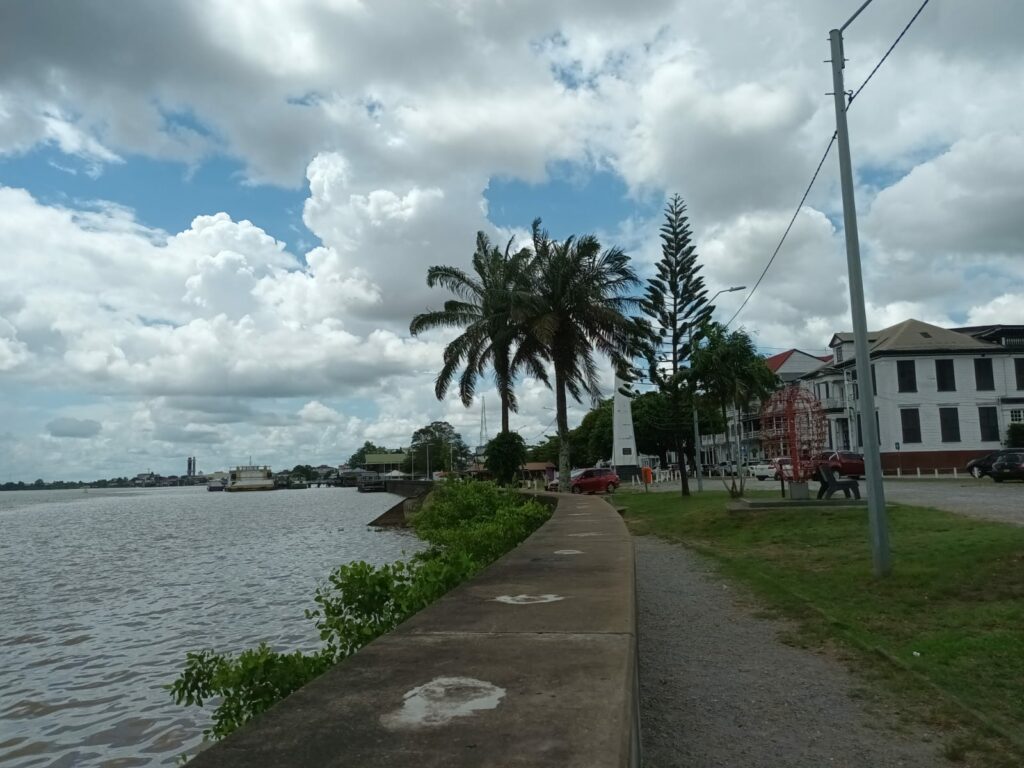
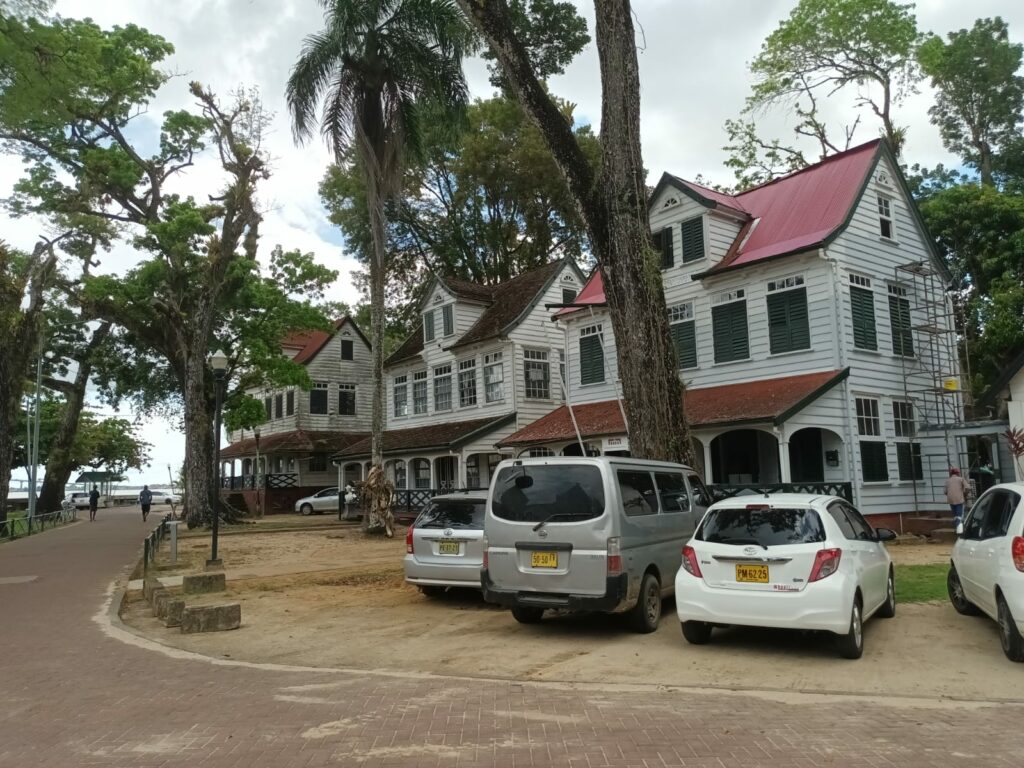
Religion
Saint Peter and Paul Basilica
Also known as “the Cathedral” or “the Basilica”, there is one that is quite special. This cathedral, built in 1883, is the largest wooden church in all of South America. From the outside it is already beautiful to see, but inside it is completely impressive. It is worth taking a look inside here to see how all kinds of works of art and paintings are carved from the wood. Keep in mind that your shoulders and knees are covered and that you are not wearing flip flops.
The Mosque and Jewish Synagogue next to each other
Within walking distance of the Cathedral, you will find an Islamic Mosque and a The Neve Shalom Synagogue peacefully side by side. A peaceful image that shows that different religions can still go arm in arm and respect each other’s norms and values. This Mosque is the headquarters of the Lahore Ahmadiyya Movement in Suriname and dates from 1984, and the Synagogue was opened in 1723. The Islamic community has established itself in Suriname with the arrival of Hindustani and Javanese contract workers, from 1873, after the abolition of slavery. The Jewish population of Suriname dates back to the 1630s, when the first group of Jews arrived in Suriname. These were descendants of Jews who fled the Spanish Inquisition. They came from Portugal, the Netherlands and Italy and fled via Brazil to Suriname. Today, the Jewish community is very small, numbering less than 200 people. The great synagogue is also open for visits and there is an associated Jewish museum.
Arya Dewaker Hindu Temple
The huge Arya Dewaker temple, one of the largest Hindu temples in Suriname, is also definitely worth a look. The round shape of the building refers to the shape of the sun, moon and earth, and the three towers refer to God, man and nature. A large Hindu community came to Suriname between 1873 and 1916, when the contract workers arrived after the abolition of slavery. These Hindus have come from British India and many of them have settled here and stayed. However, this mandir only opened in 2001 and attracts visitors from all over the world.
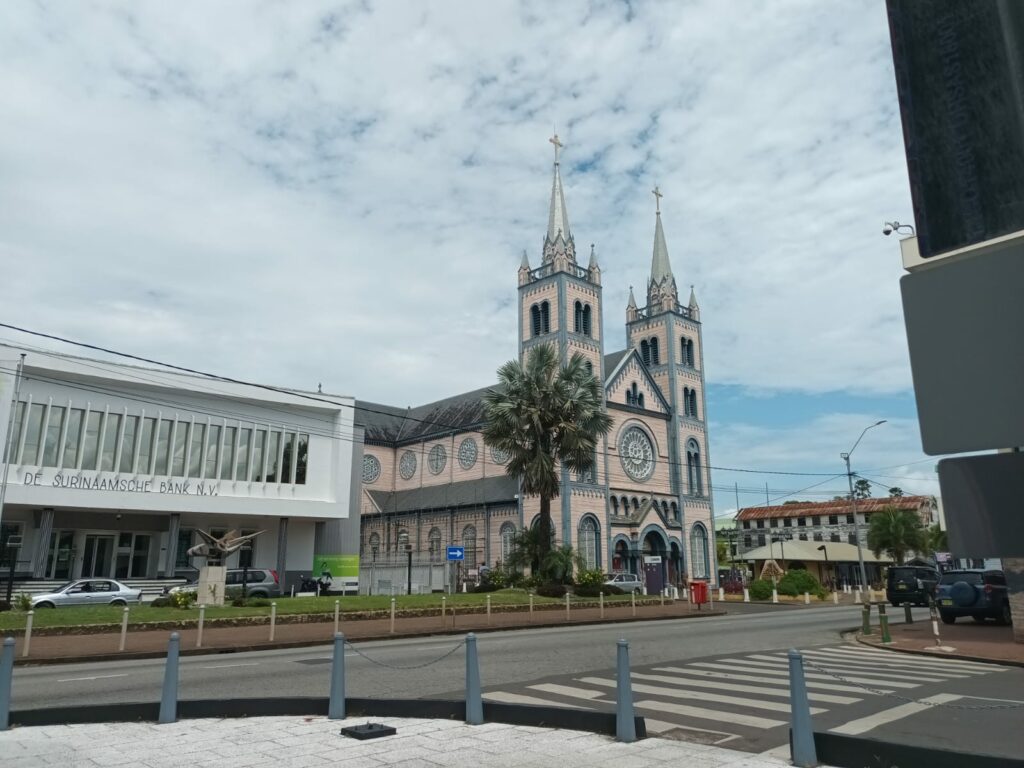
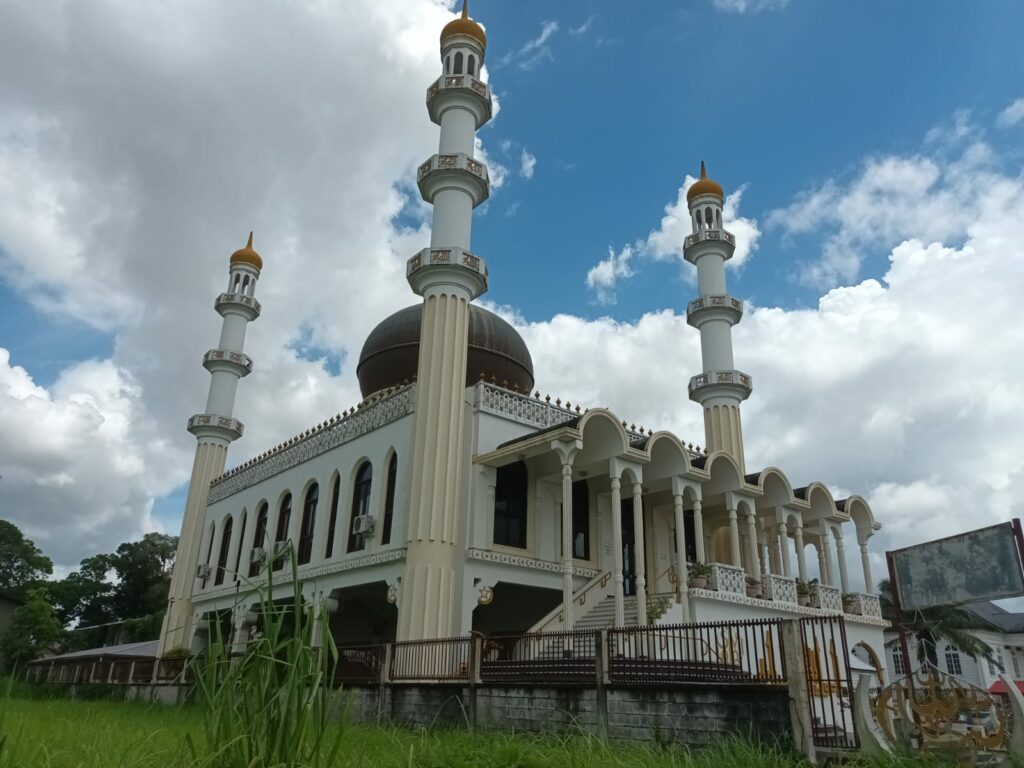
Eating, drinking and walking
Presidential Palace, Independence Square and Palm Tree Garden
The Presidential Palace of Suriname is located between the historic center and Fort Zeelandia. Unfortunately not open to the public, but from the Independence Square opposite, you can admire the bright white, colonial building. Festivities are regularly organized on Independence Square itself. For example, events take place here on almost all holidays, there are sometimes concerts and there is a large Christmas tree made of lights on the square every year around Christmas time. Behind the Palace you will find the Palm Tree Garden, where you can walk during the day and enjoy the shade that the huge palm trees give you. The Palm Tree Garden used to be part of the Palace, a gift that the governor had given to his wife. It was therefore not open to the public. Nowadays this is the case and you will find various seats and places for children to play here. During holidays, events or markets are often held here.
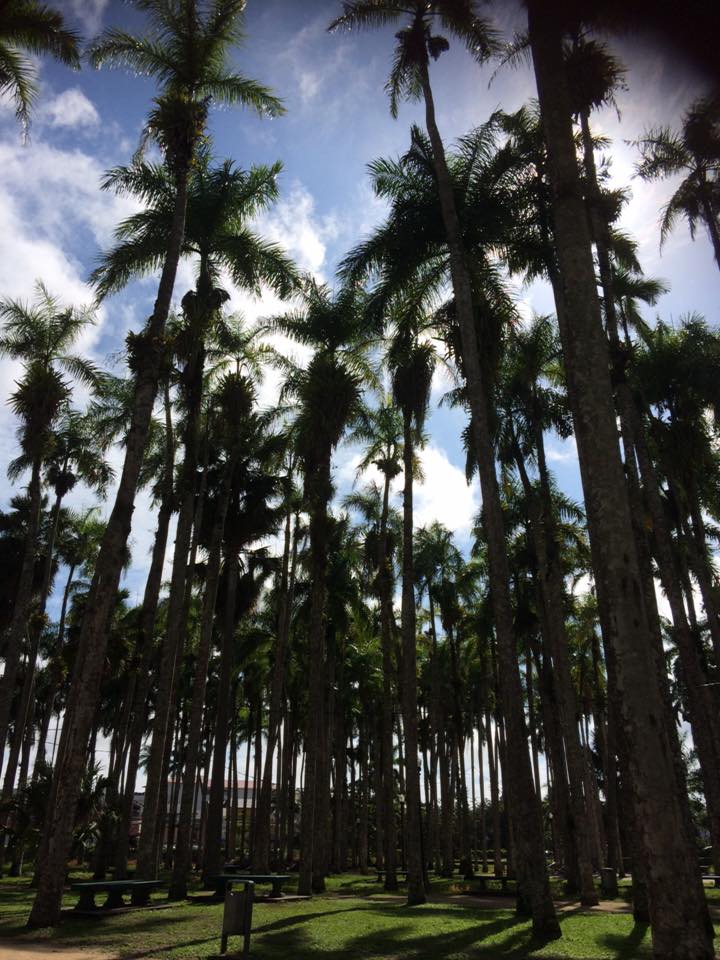
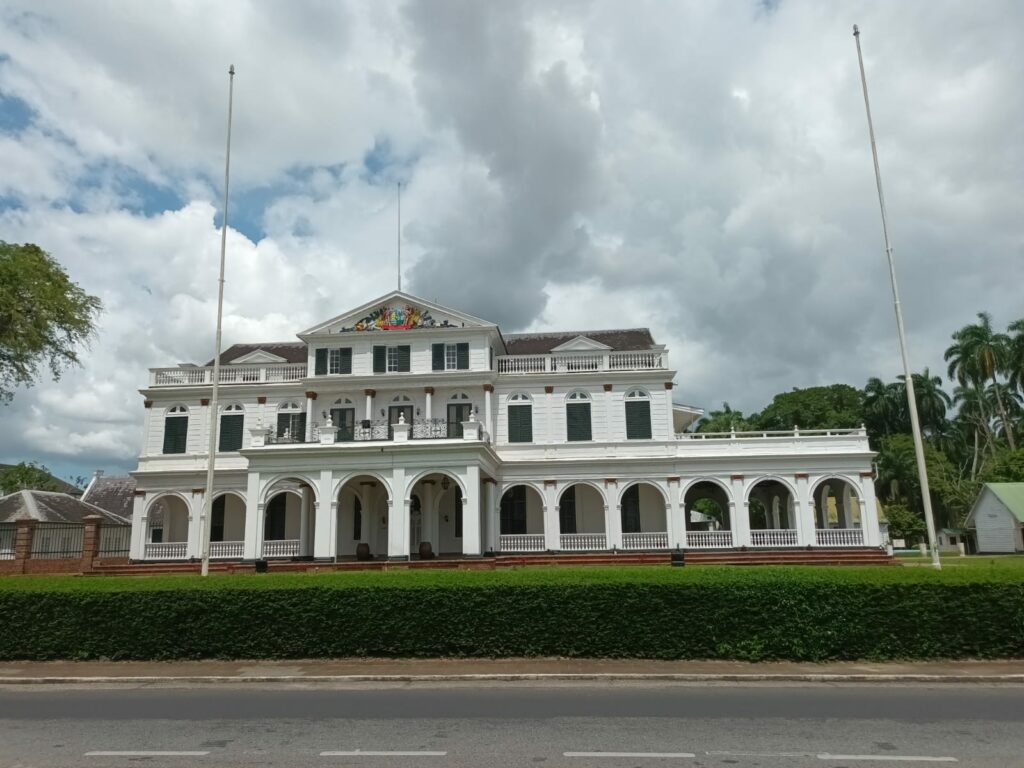
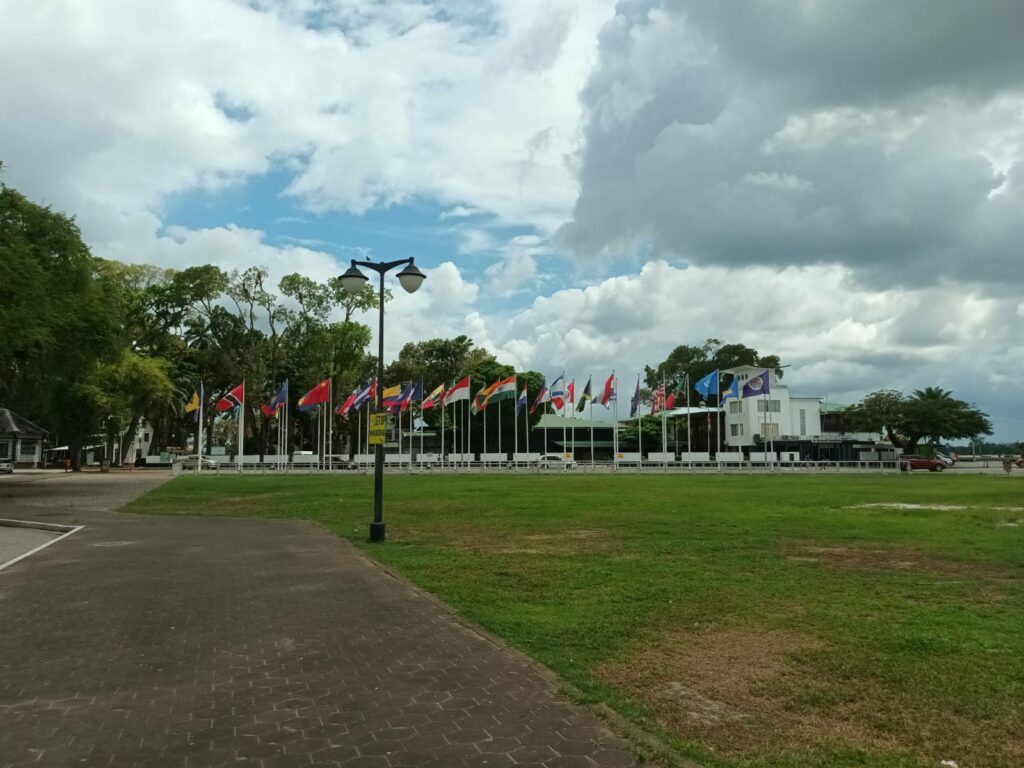
Waka Pasi
A boulevard on the edge of the Palmentuin, where it is full of Cabanas where souvenirs, delicious ice creams and coffee are sold. A place for tourists and locals to come together in the afternoon and evening hours to enjoy. Did you know that you can get the best coffee in Suriname here? (So they say). Switi Coffee.
Souposo
You can’t say you’ve been to Suriname if you haven’t tasted the delicious soups that are available there. I recommend not planning your visit here on your last day, because I can promise you want to come back to taste more of the delicious soups. Be sure to try the peanut soup and saoto soup. In addition to these regular soups, they have daily soups and various other Surinamese and international meals are also served.
Opening hours: Monday to Friday 10:00 AM – 8:00 PM, Saturday 4:00 PM – 9:00 PM
't Vat
Sidewalk Cafe ‘t Vat, the oldest cafe in Paramaribo. This former pub of a football club started out as a hobby, for which the house was converted into a business building. As it became more and more popular, the cafe has actually grown into perhaps the most famous cafe in Paramaribo. Very popular among locals as well as tourists. Here you can go all day and evening for delicious sandwiches, lunch and dinner, from Surinamese dishes to international. The pasta here seems to be one of the best in Paramaribo and is definitely worth a try. I can tell from own experience that the pasta carbonara is really good. In addition, delicious drinks such as Surinamese homemade juices and cocktails are served. The cafe is also open on weekends for dance evenings and during events such as the World Cup everything can be followed on a large screen.
Opening hours: Monday to Sunday 09:30 – 01:00
Zus & Zo
One of the most popular places among tourists, consisting of a guesthouse, restaurant and stage. Delicious Surinamese dishes are served in the restaurant, such as Surinamese pom, wok dishes and various types of fish. International meals can also be found on the menu and the various Surinamese juices are homemade. At Zus & Zo events take place on a regular basis, where young, new artists often get the chance to show their talents. It thus contributes to supporting the Surinamese arts and music culture and has a very relaxed vibe. You can also go here for the occasional party, and it is located opposite the Palmentuin.
Opening hours: Monday to Sunday 09:00 – 22:00
Mezze
Do you not feel like Surinamese food, but do you want to enjoy delicious food and good service? Then you should definitely go to Mezze. Here you are always welcomed with a smile super friendly. In this Turkish restaurant they serve the most delicious döner, kebab and Turkish pizza, but you can also go here if you just want a tasty burger, steak or Italian pizza. What I would definitely recommend is the home-made lemon juice, which they sometimes mix with orange, which gives it an extra fresh sweet taste. This restaurant is located in the Van Sommelsdijckstraat, where many other restaurants and bars are also located.
Opening hours: Monday, Tuesday, Thursday from 13:00 – 00:00, Friday and Saturday 13:00 – 01:00
Bar Bizar
A nice, little hidden bar that is still close to the center of Paramaribo. The bar is very cozy and besides that you can enjoy a drink, snack and / or meal here, you can also shop second-hand clothing and homemade jewelry. Or you can sit outside and play a game, such as Surinamese Monopoly! Once a month, on the last Sunday of the month, Bar Bizar organizes a Hippie Market. During this event, a market is held in the garden of the bar and all kinds of homemade hippie items are sold here, such as bags, clothing and jewelry.
Opening hours: Wednesday to Sunday from 16:00 – 00:00
Readytex
Located in the historic center of Paramaribo, you will find Readytex, a large store where clothing, textiles and a lot of souvenirs are sold. Here you will find the nicest gifts to give to your friends or relatives, or of course for yourself. From handmade carvings of Surinamese wood, in the shape of a caiman, dolphin or bird, to bowls and trays made of calabash. Traditional clothes and fridge magnets, cookbooks and traditional tools. And the nice thing is, with every purchase you can get a stamp in your savings card, so that you can get a discount on your purchase with a full savings card.
Opening hours: Monday to Friday 08:00 – 16:30, Saturday 08:00 – 13:30
TalkingPrints
Speaking of souvenirs and handmade products, Talking Prints has the nicest hand-made jewelry that is often made in the interior of Suriname. In addition, (washable) bags of traditional prints are made, and many other types of jewelry and souvenirs. For each product it is stated where it was made and by whom. And the nice thing is; all profits are put back into the local community.
Opening hours: Tuesday to Saturday 12:00 – 18:00
Memorials
The statue of Baba & Mai
The statue called Baba & Mai symbolizes the British-Indian contract workers who came to Suriname. The first 410 of them set foot on June 5, 1873 after making the crossing aboard the large sailing ship Lalla Rookh. The statue, which means “father and mother”, is located on the Kleine Combéweg in Paramaribo, where the coolie depot, the immigration depot, used to be. Tens of thousands of Hindu indentured laborers were temporarily sheltered here before being transported to the plantations where they would take over the work of the former slaves.
Kwakoe monument
This monument has been placed to commemorate the abolition of slavery in Suriname. The statue is made of a freed African slave who has broken his chains. The reason the statue has been given the name “Kwakoe” is because in Afrikaans this is the name given to men born on Wednesday. Slavery was abolished on July 1, 1863, and this was on a Wednesday. The statue stands on the corner of one of the busy traffic intersections in Paramaribo, near the bus station, in an always lively place. The Kwakoe statue is the most popular monument in Paramaribo.
The statue of Johan Adolf Pengel
Also known as the statue of Jopie Pengel. Johan Adolf Pengel is a kind of father of the country for many, mainly Creole Surinamese. In addition, it symbolizes a period of government in which there was no place for murderers and drug traffickers. Certainly for the older black Creoles in poor working-class neighborhoods of Paramaribo, he is an example of great significance. He was the first Creole man to become his political leader, giving his people a political voice. When he became Prime Minister of Suriname, the country was doing relatively well because a lot of money came in from bauxite, and from the Netherlands. Pengel was good to the people, but also distributed a lot of money to friends and family. During his reign, Suriname’s civil service began to grow enormously, he spent a lot of money on favoritism and family, and took many people on business trips. Despite this, he has never been much criticized by the people, and he is a popular former leader. In his time, Surinamer prospered, much was done to the infrastructure and new hospitals were built. The statue of “Jopie Pengel” is located on the Independence Square, overlooking the Palace, and behind him are the various ministries he led.
Markets
The Central Market
On the waterfront you will find the Central Market, the largest covered market in the Caribbean. Many fruits, vegetables, meat and fish are sold on the ground floor. More clothing and household items are sold on the upper floor. A nickname for this market is also called the Maroon Market, because of the sale of the many spice mixtures and homemade drinks that are used in the interior and in the winti culture. The Central Market is open from Monday to Saturday.
Saoenah Market
This Javanese market sells all kinds of ingredients, snacks and meals from the Javanese kitchen. In addition, there are a lot of fruits, juices and vegetables. In addition to the many Javanese sellers, there is also an extension where some Hindustani sellers sell their products. The entire market is covered and open on Sundays until 12:00.
Chinese Market
As the name suggests, many Chinese products are sold on the Chinese Market, such as vegetables, but also ready-made snacks and complete meals. Here you will even find garter in purple. Many Chinese come here to stock up for their families or buy meals to eat at home. You can imagine yourself in little China for a moment. The market is open until 10:00 am, so an early rise is required.
